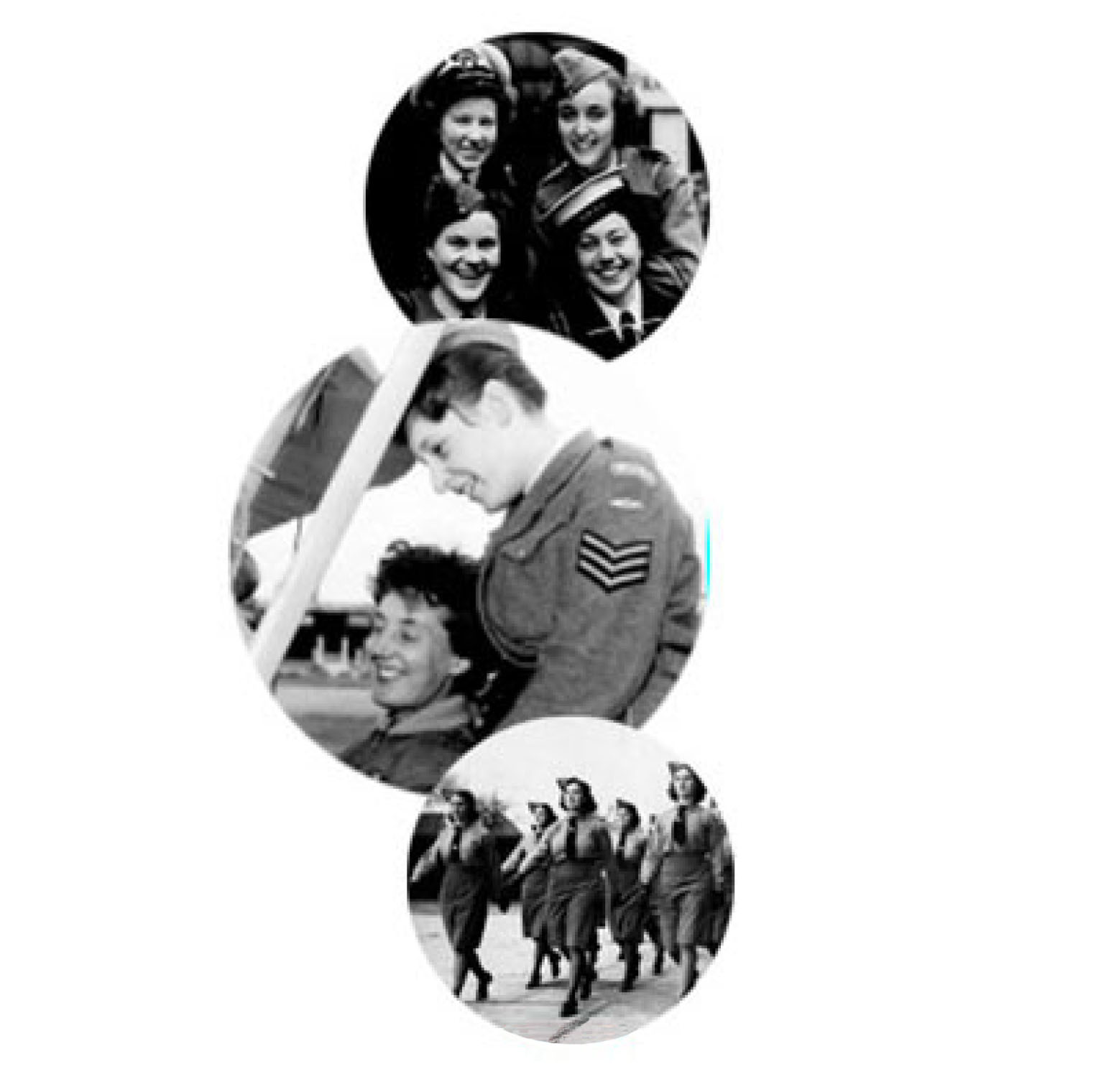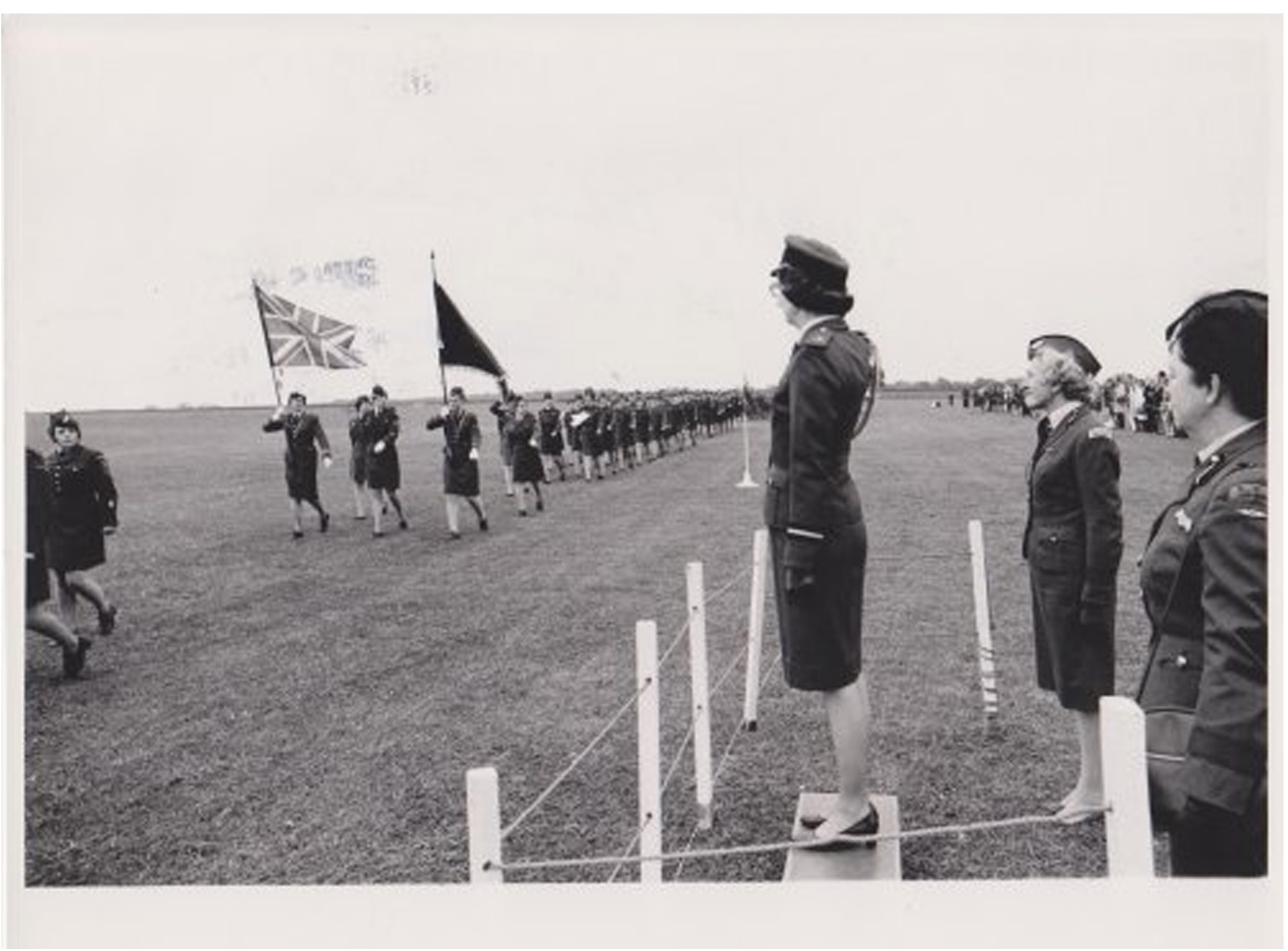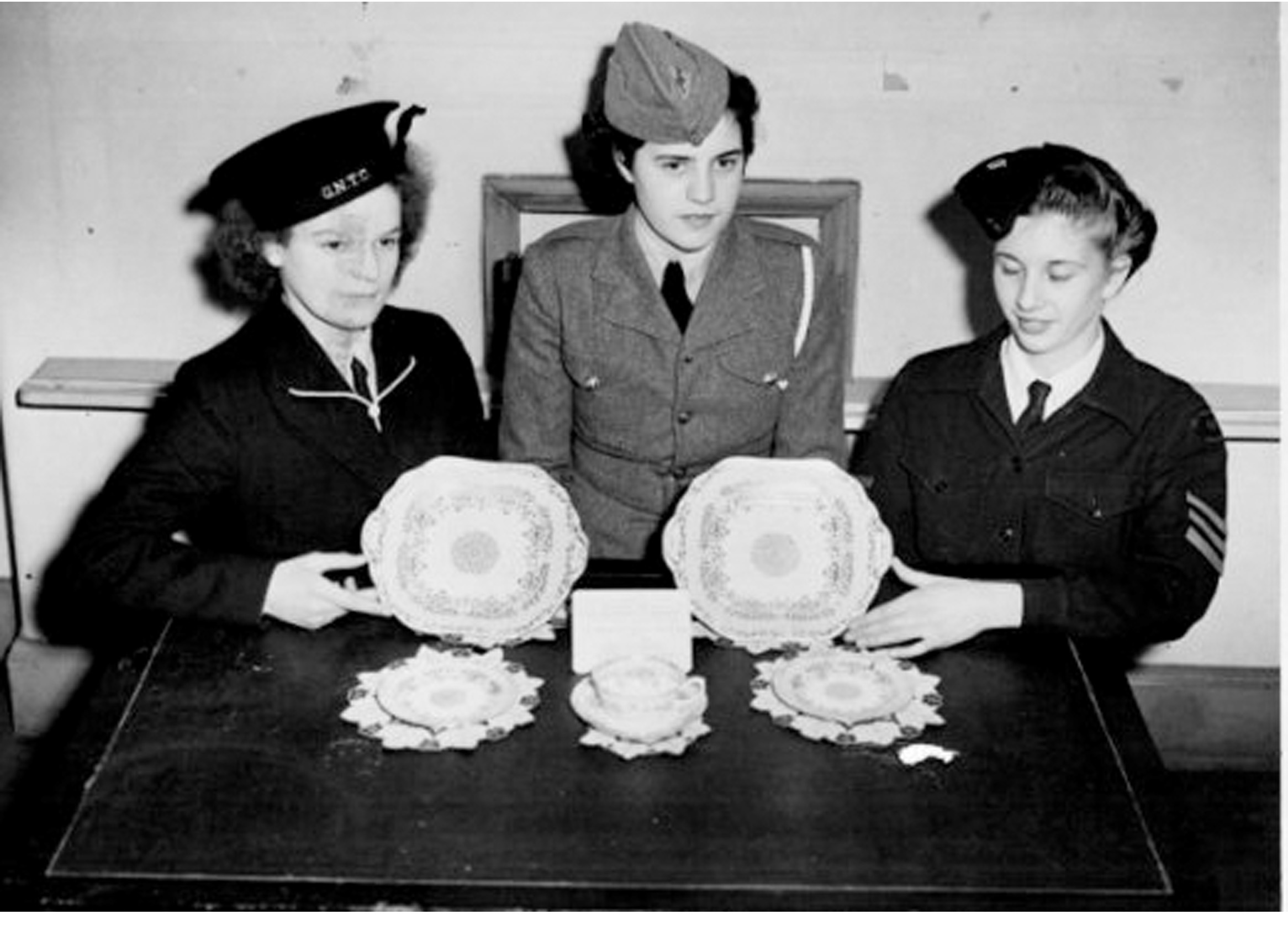Three girls' cadet corps: Girls' Nautical Training Corps,
Womens' Junior Air Corps and Girls Training Corps
When the war ended it was considered no longer necessary for
the Corps to continue and plans were made for them to
be wound up.
However, once again, the membership had other ideas and
wanted things to continue.
Programmes were up-dated to fit in with post-war life but community service continued to play a very
important and vital part of the Corps activities.
HRH Princess Alexandra, whose mother
the late Princess Marina, Duchess of Kent had taken a great interest in the affairs of the Corps, became Corps Patron in 1955.
In 1963, the GNTC were invited to join the Sea
Cadet Corps leaving the other two Corps on their own.
An ad hoc committee under the Chairmanship of Sir John Lang was set up to consider the future and a merger was arranged.
This took effect in July 1964 when a new organisation called the Girls Venture Corps was introduced. At this time, most WJAC
units worked closely with the ATC and the majority of GTC were affiliated to the Army Cadets.
Neither wished to lose their identity and so the GVC had two wings – Ground for the ex-GTC and Air for ex-WJAC. A new uniform for the former, designed by Norman Hartnell,
the Queen’s dressmaker was produced. This followed the fashionable line of the day – “Beatle” caps and collarless jackets in dark turquoise blue. Eventually the need for two
wings became unnecessary and everyone went into RAF blue.
At the request of the cadets, the words Air Cadets were added to the title in 1987.
Outdoor activities now form a large part of Unit programmes including adventure training etc. and so a working uniform of
olive green trousers with sweatshirts is worn as well as the RAF blue pullovers and skirts.
Much has happened over the past 50 years of the Corps’ existence and it is hoped that as in 1940, members are being offered the sort of activities they want. The Corps would
never have been established, had it not been for the persistence of those original wartime members but as long as there are girls who want a female organisation offering exciting activities, it will survive.
In 2022 the National Corps divided into individual units all still offering the same objectives and corps values. With our unit becoming: Wisbech Girls Venture Corps Cadets.


